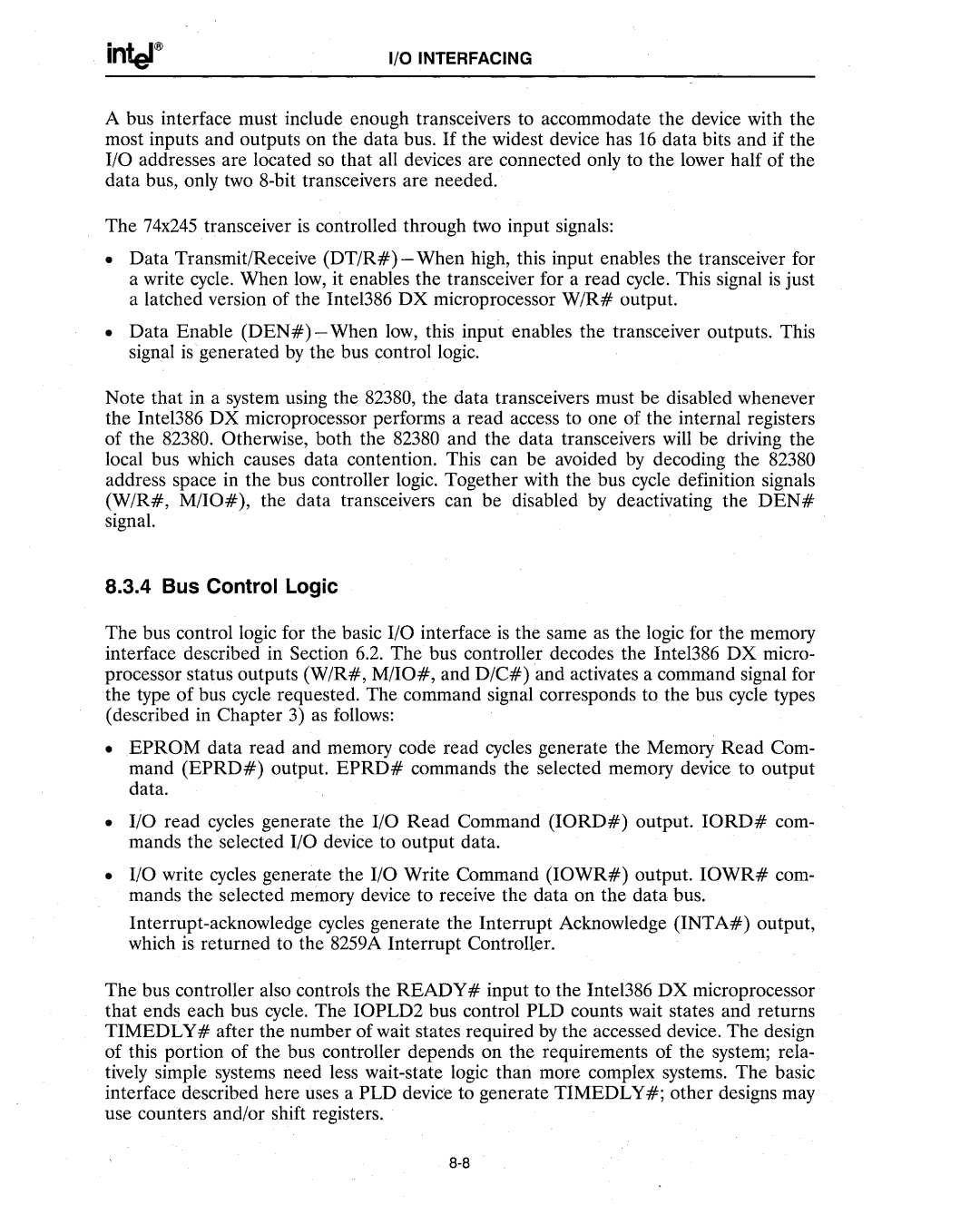
"m_l® | I/O INTERFACING |
111'tJI |
A bus interface must include enough transceivers to accommodate the device with the most inputs and outputs on the data bus. If the widest device has 16 data bits and if the I/O addresses are located so that all devices are connected only to the lower half of the data bus, only two
The 74x245 transceiver is controlled through two input signals:
•Data Transmit/Receive (DT/R#) - When high, this input enables the transceiver for a write cycle. When low, it enables the transceiver for a read cycle. This signal is just a latched version of the Intel386 DX microprocessor W/R# output.
•Data Enable
Note that in a system using the 82380, the data transceivers must be disabled whenever the Intel386 DX microprocessor performs a read access to one of the internal registers of the 82380. Otherwise, both the 82380 and the data transceivers will be driving the local bus which causes data contention. This can be avoided by decoding the 82380 address space in the bus controller logic. Together with the bus cycle definition signals (W/R#, M/IO#), the data transceivers can be disabled by deactivating the DEN# signal.
8.3.4 Bus Control Logic
The bus control logic for the basic I/O interface is the same as the logic for the memory interface described in Section 6.2. The bus controller decodes the Intel386 DX micro- processor status outputs (W/R#, MIIO#, and D/C#) and activates a command signal for the type of bus cycle requested. The command signal corresponds to the bus cycle types (described in Chapter 3) as follows:
•EPROM data read and memory code read cycles generate the Memory Read Com- mand (EPRD#) output. EPRD# commands the selected memory device to output data.
•I/O read cycles generate the I/O Read Command (IORD#) output. IORD# com- mands the selected I/O device to output data.
•I/O write cycles generate the I/O Write Command (IOWR#) output. IOWR# com- mands the selected memory device to receive the data on the data bus.
The bus controller also controls the READY# input to the Intel386 DX microprocessor that ends each bus cycle. The IOPLD2 bus control PLD counts wait states and returns TIMEDLY# after the number of wait states required by the accessed device. The design of this portion of the bus controller depends on the requirements of the system; rela- tively simple systems need less
